#afro mexican culture
Explore tagged Tumblr posts
Text
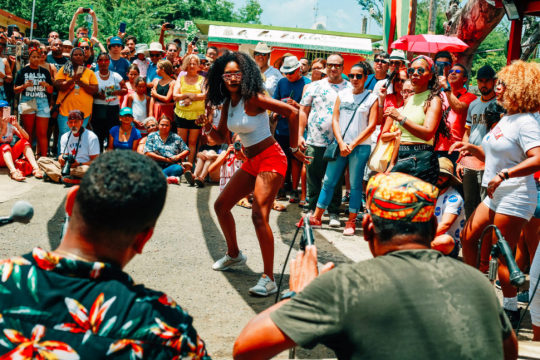
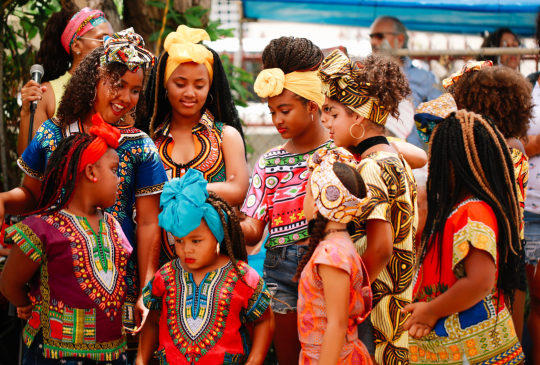
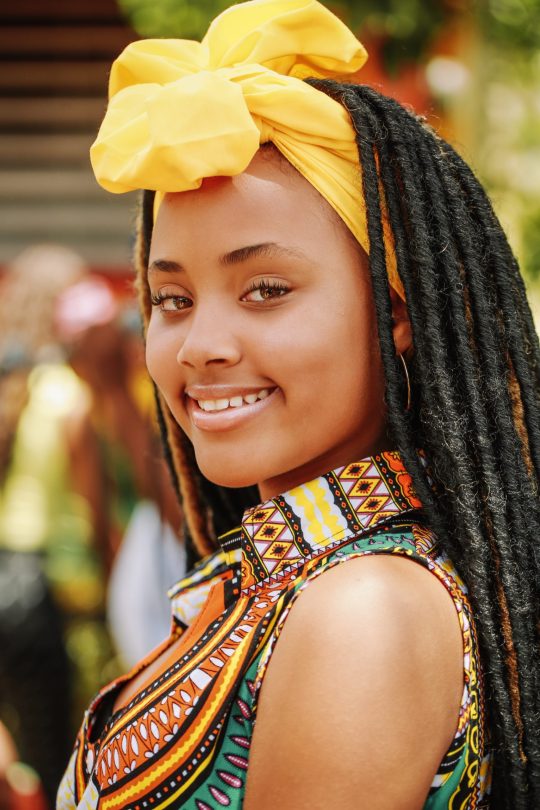
Loíza (Spanish pronunciation: [loˈisa]) is a town and municipality on the northeastern coast of Puerto Rico, north of Canóvanas; east of Carolina, Puerto Rico; and west of Río Grande, Puerto Rico. Loíza is spread over five barrios and Loíza Pueblo (the downtown area and the administrative center of the city). It is part of the San Juan-Caguas-Guaynabo Metropolitan Statistical Area. It is renowned for its rich Afro-Puerto Rican culture and heritage.

Some say its name comes from a female cacique, named Loaíza or Yuíza, who governed the region formerly called Haimanio, on the shores of the Río Grande de Loíza. It is said that this cacique might have married a mulatto conquistador called Pedro Mejías, but there is no evidence of this. Other sources point to a Spanish landlord named Iñigo López de Cervantes y Loayza, who owned a lot of the territory, and was renowned among governors and colonists of the time.
In 1692, Loíza was officially declared an urban area due to its population (100 houses and 1,146 residents), but it was in 1719 that the Spanish government declared it as an official town. It was founded by Gaspar de Arredondo.
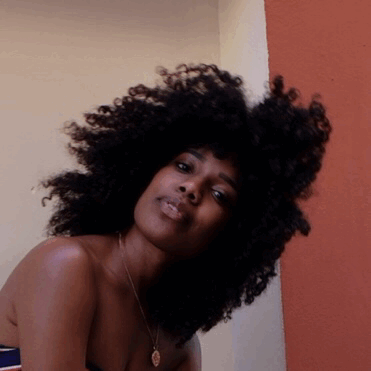
Puerto Rico was ceded by Spain in the aftermath of the Spanish–American War under the terms of the Treaty of Paris of 1898 and became a territory of the United States. In 1899, the United States Department of War conducted a census of Puerto Rico finding that the population of Loíza was 12,522.

#african#afrakan#kemetic dreams#africans#brownskin#brown skin#afrakans#african culture#afrakan spirituality#afro rican#afro puerto rican#puerto rican#puerto rican goddess#boricua#dominican#hispanic#mexican#latina
59 notes
·
View notes
Text
Source: Aranivah | Links
#cumbia#black history month#afro latino representation#afro latino#colombian music#cumbia colombiana#black lives matter#black history is american history#indigenous people#indigenous lives matter#indigenous roots#afro latino history#mexican culture#mexican music#mexican american#black brown unity#bipoc representation#bipoc lives matter#bipoc
234 notes
·
View notes
Photo

Carmen Robles.
Source: B. Christine Arce - México's Nobodies: The Cultural Legacy of the Soldadera and Afro-Mexican Women (2016: 138)
13 notes
·
View notes
Note
Hi! You don't have to answer this if you don't want to, that's totally fine! But you talking about Orville Peck's appropriation of indigenous culture with his fashion choices made me realize that I had never considered that there might be some aspects of "cowboy clothes" that white ppl shouldn't wear and that was super wrong of me. Again, you totally don't have to answer this, but I was just wondering what ways a white person could wear "cowboy clothes" in a manner that wasn't disrespectful? Or perhaps, should we not wear them at all? I can't afford T yet, but when I can finally get it I was planning on getting a cowboy outfit to embrace my trans mascness, but if that would be wrong of me I can scrap that plan no problem!
Ehhh again this is actually SUPER HARD to answer because almost everything about cowboy fashion & the cowboy "aesthetics" are lifted directly from Native American fashion and culture, either because a lot of cowboys back in the day were Native American themselves (including Afro-Natives & Indigenous Mexican vaqueros) or they were White & just kinda. stole the look from the Native cowboys due to a number of factors.
If you google "cowboy jewelry" the first thing that comes up is silverwork & belts & turquoise jewelry, which is taken from Navajo metalwork. Fringed leather clothing? Again, many Native tribes did that (& in some tribes the fringes could mean something, its not just for looks), most popularily with vests, jackets, and pants. A lot if the leather jackets were a result of Native women just sewing their clothes the same but in a European styled cut. Compare this "cowboy" look below to a Lakota war shirt: both have hair embellishments dangling from the arms.
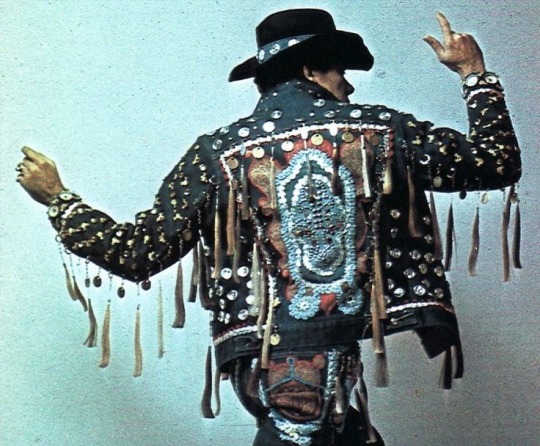
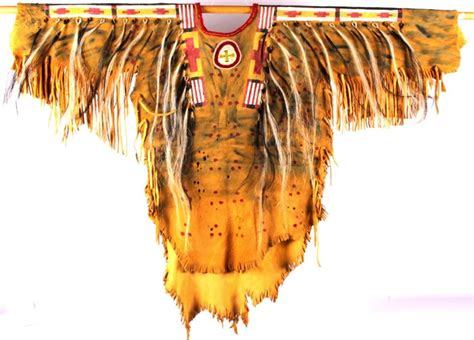
Studded belts? Inspired by Cheyenne mirror belts, which often also have metal studs in them & you'll still see Native pow wow dancers have this in their regalia. Floral vests? A lot of the inspiration comes from Plains floral beadwork. Geometric patterns and blankets? Came from Southwest or Mexican Native American blankets & designs, ask any Navajo weaver & they'll tell you the same. Feathers in cowboy hats? Who else is famous for wearing feathers on their heads--? Native Americans. The look is still popular with older Native men.
Hell, if you visit this site that sells Western/cowboy fashion, you'll see a SHITTON of appropriation going on, taking Native imagery & designs, including one taken from Native American ledger art, all on White models.

The appropriation of Native culture and fashion in the cowboy/western sphere is ongoing, and the influence that Native fashion & culture has in Western/cowboy fashion as it is is absolutely MASSIVE. I once said in another post that the cowboy/western aesthetic essentially belongs to Native Americans, Latines (especially Mexicans), and Black people. And the history of White cowboys has been one largely of colonialism, racism, and displacement of Indigenous peoples, and the masculinity associated with White cowboys especially is also steeped into racism & American patriotism (think John Wayne. There's a reason he's an American icon who played cowboys & killing Indians in films.). I think the only thing that isn't influenced from either appropriation or colonization is like, jeans. Even the style of cowboy boots themselves and potentially chaps were influenced from vaqueros.
So if you're White I'm not sure that'd exactly be a good route to take because trying to seperate Indigenous elements from this fashion/look (nevermind the problematic history of White cowboys) is almost impossible. Obviously I can't force you to do anything, but honestly if I were you, I'd try a different direction, because otherwise I think you'll find trying to do this will be very hard.
298 notes
·
View notes
Text
Because I feel like it.
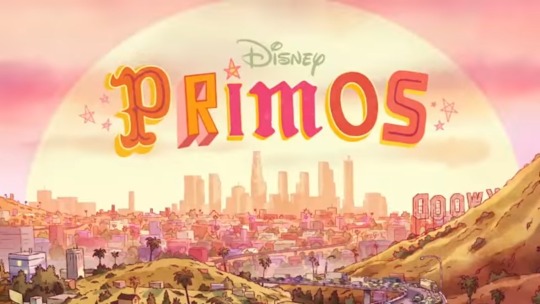
Yellow sky? Bare footed characters? Mostly a mess? Over exaggerating some of the Hispanic features. I saw the first episode, and it was just poorly written in general. And what mother calls their son "cochinada." Roughly translates to dirty or trash.
What's good Latino/Hispanic representation?
Colombian 🇨🇴
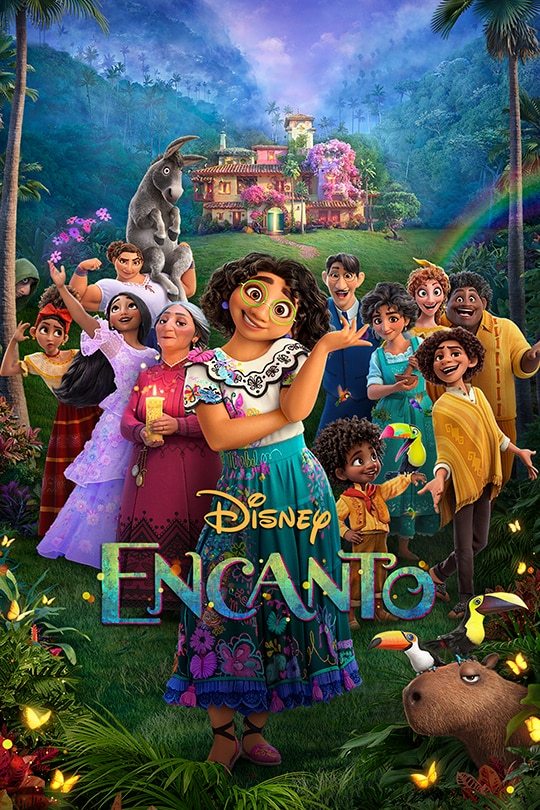
In the Caribbean region of Colombia, they light up candles and lanterns on December 8, before sunrise. So the candle giving them magic was a wonderful detail. Generational trauma is a thing for us Latinos, and this film handled it in a healthy and matuer manner. And I love how they didn't shy away with how Spaniards attacked and colonized latin lands.
Mexicans 🇲🇽
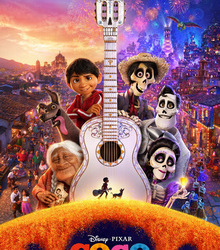
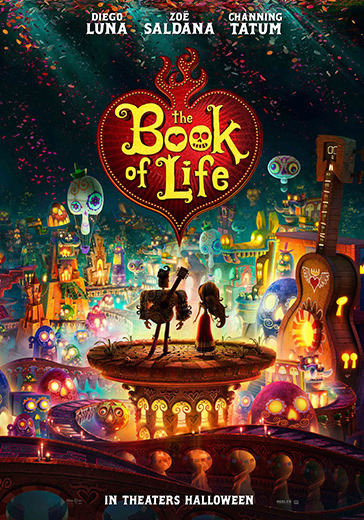

Yes, us Mexicans love death. 🤣 But hey, I was always taught to respect death, La Muerte, and our ancestors. So, it makes sense that many Mexican films talk about death. But I also like that Maya and the Three have Aztec, Mayan, and Incan mythology. Natives to Mexico.
Dominican Puerto Rican 🇩🇴🇵🇷

Luz mom is Dominican, and Luz dad is Puerto Rican. I appreciate a good interracial couple and a mixed child. Luz name also translates to light, and some Latinos are known for doing witch craft. Or at least knowledgeable about witches and demons, and no, we aren't evil. We just know how to handle this stuff. Plus, the owl has many meanings in Latino culture. To some, I believe the owl is a messenger of death and is telling everyone that death/danger is near.
Afro Latino. Puerto Rican 🇵🇷
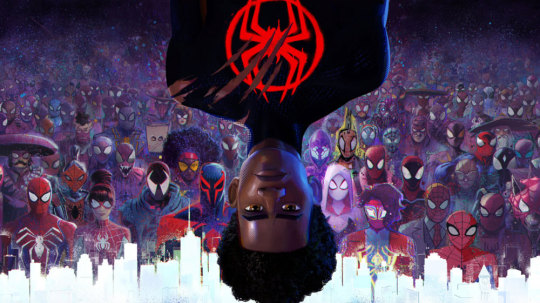
I am a massive sucker for interracial couples and mixed kids because of this. I was working at a hispanic store as a cashier. This woman walks past me and starts talking to the bagger. The bagger has blond hair, blue eyes, and white skin. The bagger looks at me worried because she doesn't speak English. So brown skin, black hair, me has to tell the bagger that the lady wanted ice in Spanish. I then talked to the lady in English. Her reaction? "YOU SPEAK ENGLISH!" Same for a dark skinned man. So many people skip me and talk to him in English. He's Dominican, and he only spoke Spanish. I appreciate films that show Latinos in different skin types and features. We're not all brown. So yeah, the mass diversity in this film is just beautiful. And I love how they wrote Miles relationship with his parents. Realistic conflict and healthy communication. Not falling into toxic stereotypes.
Spainard Puss 🇪🇸 Mexican Kitty & Perrito 🇲🇽
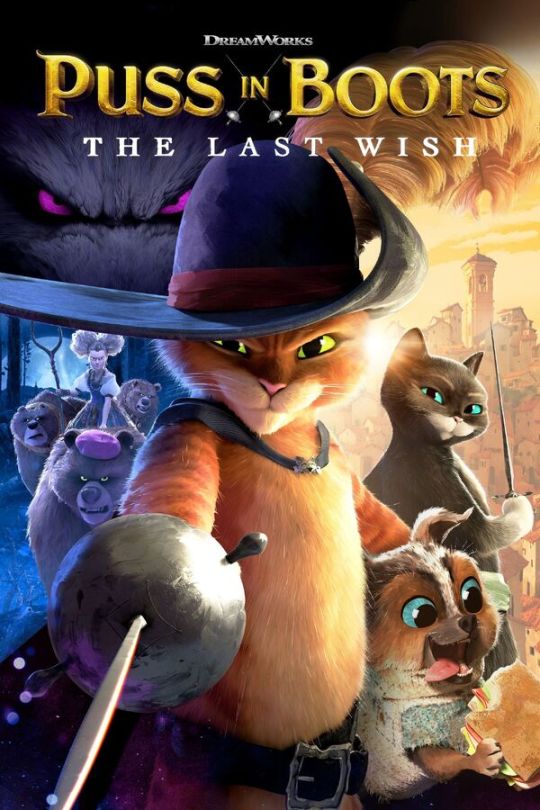
Spaniards are considered Hispanic but not Latinos like Mexicans. And again, interracial couples for the win. And I love the realism in their romance that heals through healthy therapy. Many people see Mexicans as toxic, so having Perrito as a therapist and the one helping everyone emotionally, it's nice. Not every Mexican is toxic. And I love how you can tell their Spanish and Mexican even though their animals. Puss Spanish accent, Spanish actor, him being a ginger like some Spaniards, flamingo dancing, and gazpacho. Kitty, Mexican accent, Mexican actress, black fur/hair like most Mexicans, quinceañera, and I love how they gave her a luchador mask. Something that originates from Mexico. Also, my brother and I joke how we as Mexiacns can't swim and Kitty nearky drowns in the 1st film. 🤣 Perrito, he's a chihuahua with a Mexican actor. Enough said. I also want to say death is Brazilian because of his actor.
I don't know much about Spanish culture, but someone said the wishing star has a connection to Spanish culture. Is that true? If so, COOL! Because death is connected to Mexican culture. So, Dreamworks finding a way to combine Spanish and Mexican culture in one film is 100% magical.
There are many more, like Beverly Hills Chihuahua 🇲🇽. 🤣 That film is better than Primos. Emperor's New Groove, Peru 🇵🇪, and Rio, Brazil 🇧🇷. Not Hispanic but Latino culture. But this post is getting long. Primos! A huge step down in Latino/Hispanic representation. Especially since we have so many good films and shows that have proper representation.
#primos#encanto#maya and the three#maya and the 3#coco#book of life#the owl house#toh#owl house#puss in boots#puss in boots the last wish#spiderman across the spiderverse#spider man: into the spider verse#into the spider verse#spiderman: into the spiderverse#spiderman into the spiderverse#spiderman#spider man across the spider verse#across the spiderverse
473 notes
·
View notes
Text
Once again I saw people complaining about making Greek mythology things with people who have dark skin, because they aren't "ethnically Greek". But they actually mean "racially Greek" because Ethnicity is not just skin color, it also refers to a shared culture, customs, traditions etc etc, but I digress
And before annoying people on tumblr start sending me hate messages accusing me of being racist against Greek people (again lol) for saying that is not bad for something Greek mythology related to have a couple of Dark skinned characters out of the majority light skinned characters (coughHadescough) allow me to explain
Now, Greek isn't actually a race, all in all the Hellenic Republic as we know it today is a very recent concept in the large scheme of theings. And is not a race because people of different backgrounds can have the Greek citizenship
But let's humor them for a moment
I went to Google images to search for the average Greek person and these are the results:

Now, we see here the so called "ethnically correct" way to look Greek
Light olive skin, dark hair and brown eyes
The way Greeks look, right?
Well
Surprise assholes, they are all Mexicans JAJAJAJA
And what does that mean? Are Mexicans stealing the Greek look? Are those people in Mexico stealing representation by looking like that? Wait, it's all Mexico? Always has been
No, but seriously. What does that means?
It means that Light olive skin, dark hair and brown eyes... It's a pretty common look everywhere
Yeah, even in South Africa you're going to find people looking like that
Now, mind you, not all Mexicans look like that, there are Indigenous people, Afro Mexicans, wHite Mexicans, Chinese Mexicans, etc etc
And I'm sure there are people in the Hellenic Republic that look different, with lighter skin, with darker skin, you know the drill
But that's the thing, you can't assign just one right way to look to a country, if you start assigning a race to a nationality you're on your way to create an ethnostate (which is bad mind you)
And people who complain about dark people taking away representation from them. Honey; Representation is not something that has a finite amount, if you don't like how some people make Patroclus dark skinned, you can always make your own version or support an artist that makes a representation you like instead of complaining about people who make him "not ethnically correct"
(Mind you, making Patroclus wHite isn't bad and has been done before)
Besides, making something culturally accurate about Greek culture doesn't have anything to do with race, as culture doesn't equal race
Like if somebody made something about Mexico and put Afro Mexicans or Chinese Mexicans in there, it's not taking anything away from me, because there's not a finite amount of representation
And it's not the same as whitewashing, as people complain about whitewashing because there are already A LOT of things with white people in it, and plus, complaining about whitewashing does next to nothing, as it's still happening (like how in the most recent adaptation of wuthering heights they choose a white actor for a character that's implied to be Romani)
BTW, I lied, in the picture above, two people are Greek actually and 2 are mexican (allegedly, I just found the pictures on Google, so who know where they're from really, they could be from anywhere lmao)
27 notes
·
View notes
Text
Xilonen and her Brazil elements

Just starting off the post saying that I know she also has Mexican elements in her character, Genshin has a tendency of mixing a bunch of cultures up so it's entirely possible for her to be both Mexican AND Brazilian, I won't talk about those aspects because I'm clearly not Mexican-
Brazil Mexico union okay??? No fights, we love you Mexicans 🇲🇽🇧🇷

First we'll start with the fact that Xilonen is a jaguar! Jaguars are animals that are typically found on the American Continent, Xilonen has the same patterns of their fur, plus she is also shown laying on a tree on the trailer, which is a thing jaguars do. Jaguars are important figures to Brazil (plus they're called onça-pintada... calling them jaguar feels like a crime), they represent our biodiversity and how it's important to protect and conserve these species. The country decided to represent national species on the official money notes, and the jaguar is present in the 50 reais note.


From what we've seen from her so far, she is related to music, probably a DJ, and in fact some of her elements are related to the most stereotypical Brazil things ever, Samba, Carnival and Funk.
I'll begin this part talking about each of these thing in more detail. Samba is a Brazilian music genre and dance usually related with Carnival, it's origins come from Afro-Brazilian people communities in Bahia and then later on Rio de Janeiro. The Brazilian Carnival is the most popular holiday in Brazil, where people usually just come together to have fun and dance, it's very tied to Samba as most people there dance it during Carnival. Funk is a music genre in Brazil that came from black communities in Rio de Janeiro, mostly from favelas. All of these things are part of Brazil culture and also part of the stereotype people outside think of Brazil, usually people think we are only these things
As for Xilonen, her high heels are extremely similar to the heels the Samba dancers use, her makeup is glittery and she has glitter around various parts of her body, glitter is very used in Brazilian Carnival. Her outfit looks like a typical outfit a Brazilian funk dancer would wear (if you disagree about that just take a look at Brazilian Miku design) and her lots of rings and big necklaces are also used by funk singers.
This particular idle or hers looks like she's kinda dancing Samba with her roller-skates, but I'm not entirely sure about it

Last part, her signature dish is made using the brigadeiro recipe, which is a traditional Brazilian food! But her signature dish looks like just some regular chocolates unfortunately
As you might have noticed, most of these elements in Brazil culture are from Afro-Brazilian origin... So why the fuck is she white?? I know Brazil IS diverse and has white people but... this is kinda like making a white rapper character, wait hoyo already did that too?? No surprise.
#theo is rambling again#I'm not maintagging this I don't wish to be found so easily by the Genshin fandom#I'm sorry. the only reason I'm doing this post is because I like infodumping and talking about Brazil...#i think this post isn't that long just because I'm not that big about Carnival or Funk and I don't even live in Rio#if this was about Cangaço or any northeast culture ohhhh i would be making such a big post...#i wish she wasn't so.... Brazilian stereotype? at least maybe we have some hope left for Iansan. our Afro-Brazilian queen...#but knowing this company I have no hope. I'm never coming back unless they fix their mistakes
20 notes
·
View notes
Note
I remember u making a post a lil while back abt ur new ethnicity hcs,, so like were u gonna drop that orrr🫣
ok anon (and the other anon who asked for this idk maybe ur the same anon),,, these r for U🫵🏽
like i said not alot rlly changed, i apologize</333 BUT there r new additions!!!
the curtis bros- thee whitest americans ever i think, 3/4th irish 🇮🇪and 1/4th hungarian🇭🇺, however they see themselves as more american than anything so they dont rlly claim it too much (like i said also ethnically ashkenazi jewish)(this is a prefect time to say i have had thoughts about them being black before, but them being white is just so,,,yea)
the shepards- AFRO HAITIANS WOOOO YEA SELF PROJECTIONSSSSS AW YEA BABY WOOO🇭🇹🇭🇹🇭🇹🇭🇹, they literally moved FROM haiti so they r def connected w their culture!!!!can soeak the language
two bit- 3/4th cambodian🇰🇭, 1/4th irish🇮🇪, kinda??? connected to culture but not rlly
johnny- mestizo mexican 🇲🇽and bengali🇧🇩, can speak spanish, can speak some bengali, pretty connected to both cultures
sylvia: afro haitian🇭🇹🇭🇹🇭🇹🇭🇹 heyyyyy bff, not rlly connected w culture, learning kreyòl
steve- afro nigerian 🇳🇬(bc nigerians r funny as hell when theyre upset and ik his arguements w pony funny as hell) (from the igbo tribe), not connected to culture</333
dallas- (i flip flop between him being black and white lmao) russian🇷🇺 , thinks hes not connected to culture but he is☝🏽☝🏽, wether or not he can speak the language i flip flop between
cherry-wasain, french (ewwwww)🇫🇷 and vietnamese🇻🇳, like i said shes white passing and not very outwardly connected w the cultures, knows french more than viet but shes trying her best kinda
marcia-blasian (yes im so funny for this), i dont see her as haitian no more lmao, but she is african american❤️🔱🖤 and thais🇹🇭, only connected to thai culture however
evie-african american❤️🔱🖤connected w culture enough id say
sandy-indigenous (cherokee), not rlly connected w culture, dont know the language either
bryon- white, spanish 🇪🇸 , not connected, barely knows spanish
mark-white, polish🇵🇱 and czechian🇨🇿, not connected w culture in the slightest, considers himself more american
m&m and cathy-indigenous (osage nation), somewhat connected, their family tries!!
bob- white, british🇬🇧(ewwwwww)
randy- white, portugese🇵🇹
buck- afro trinidadian🇹🇹, connected w culture, he was born n semi raised there
and i think thats just about everyone???? guys, what r UR ethnicity hcs🤔🤔

17 notes
·
View notes
Text
Good Stuff: Primos

It was the summer of 2023. We got the opening to Disney's new cartoon. Then it was bullied into releasing next year. Primos is one of those cases where culturally, you could smell the Americana from it in spite of intentions, and when you get around to it the hate wasn't fully deserved. It was funny, but to me this was like if Japanese Americans shitted on Dragon Ball Z for characters being named after veggies. Then again, nobody hates shit harder than Mexicans and Latinos and the PR wasn't the best, Tater's VA definitely didn't help. But, I'm grateful Disney didn't pull a Zaslav and shelf this as if this was the damnedest thing to ever happen to Hispanics. Now that the wait is over, is the show good?

it's far better than Latinx Loud House Cleveland Show, credit where due
The comparison to Loud House/Casagrandes isn't far off, but Primos has the advantage of it feeling like the time Tater spends with her extended family will have a start and end to it. We're in the same headspace as Latka who's not only adapting but revaluing her perspectives regarding her family. Nothing groundbreaking, but reminds me of Clarence where it has that messier but more homey charm as opposed to Loud House where over time it felt too plain and overstayed its welcome. Primos I feel will work as a limited season show like Gravity Falls as you can see well paced progress with both Spud's self-discovery mission and her familial relationships to not too overstay as if it needed to be Disney's answer to Loud House. I overall appreciate DTVA for looking to do less inherently story heavy shows.
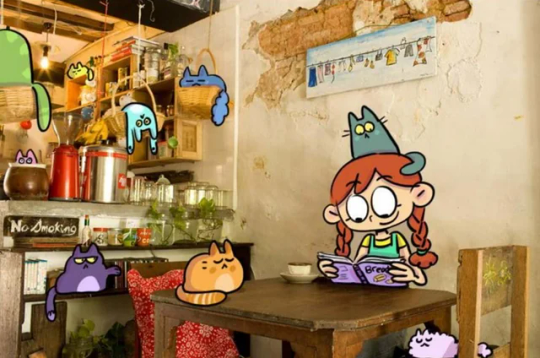
We could've had a Katz Cafe too, Disney
Now to get a tad personal, I am Mexican American (Afro-Hispanic specifically) and I can relate to Tuber to a minor extent, given this is based on the creator's own life. Primos doesn't really hit those deep cuts though when despite the heritage I bear, making your show about growing up a gringo or gabacho is not a mirroring experience I'm that into watching. This show isn't like Victor and Valentino or the Puss in Boots cartoon where its representation is purely into its core elements like the folklore and presentation. It's more akin to saying you proudly grew up on Del Taco joints and the ability to grasp subtitles. This is more Disney's overall ethnocentric MO when it comes to other cultures: more for those who want to feel aware than anyone that lived or is living it. I'm not here to chastise Natasha's authenticity in producing this nor act like this is a very patronizing kids cartoon. I'm just saying relatability only goes so far here and we otherwise have a very okay cartoon that had intentions on a perspective we're well aware.

And c'mon, nothing has overthrown the GOAT
Again, I appreciate the small shift to more episodic and grounded shows as opposed to serial adventures to keep track off. While not unique, Primos has a sweet blend of comical and comforting to be worth a watch. French Fry is an enjoyable protag (while Nellie is better) among a good, less archetypal family that overall makes episodes feel as easy-going as Kiff. I won't pretend to say I hated this originally nor did I ever hold any resentment to say this doesn't now deserves more of a chance.

7 Out Of 10, like your average stoner trip to Taco Bell
14 notes
·
View notes
Text

Happy Hispanic/Latinx Heritage month!! ♡´・ᴗ・`♡
I thought it would be cute to make a pop culture focused fan art to celebrate the month and especially of my favorite characters of recent!!
Left to right for those who don’t know
Miles Morales - Afro Latino/ Puerto Ricano and VO ed by Shameik Moore
Jaime Reyes /Blue Beetle- Mexican and portrayed by Xolo Maridueña
Monkey D Luffy (live action) - portrayed by Iñaki Godoy who’s Mexican
#hispanic heritage month#hispaniclatinoheritagemonth#miles morales#across the spiderverse#spiderman#jaime reyes#blue beetle#monkey d. rufy#one piece#shamiek moore#xolo maridueña#iñaki godoy#fanart#digital fanart#art#digital art#procreate
107 notes
·
View notes
Text
Now that I’m less…cranky…I do want to say a few things with a logical brain that I didn’t get to say before because all I’ve been doing is being upset so…this might be the last time I’ll talk about the aftermath of the election on here but we’ll see.
1. I truly do not understand why straight white women in particular are starting to talk about the 4B movement and supporting it when just the other day they were talking about “canceling their husband’s votes”. I’m so sick of this fake performative behavior that comes from white women concerning feminism when they know something will directly impact them. Obviously, this is a generalization because I know not all white women wanted Trump and sure I get some people are married to spouses due to financial reasons or are in abusive situations I’m not talking about them. But the fact that 53% of white women indiscriminately voted for that man for god knows why and NOW is when they’re scrambling is crazy lmao? Like what did you think was gonna happen? They’re always behind on things that Black women, indigenous women, and women of color have already been doing or warned them about. They’re too damn male-centered to acknowledge that they’re victims of the patriarchy and historically have prioritized their whiteness above all else.
2. The concept of Latinos for Trump quite literally doesn’t make sense to me. These dumbasses, probably mostly white Latinos at that because they hate Afro-Latinos, crave to assimilate themselves with white supremacy. But it’s so stupid it’s almost laughable I mean. These people don’t realize that they just gave up any chance they may have to get a path to citizenship, but because they think they’re the “good Latinos” and used the “legal” channels of immigration that somehow they’ll be saved. The problem with the possibility of mass deportations happening is that they won’t be able to tell who’s an immigrant and who’s a citizen. Latinos are so diverse, the dialects and cultures are all different across the board. Plus, they’ll only be going for the ones that look “Latino/Mexican” enough to deport them, they definitely aren’t going towards the Europeans that immigrated here on work Visas tho! Latine people sometimes are so ignorant it makes my head hurt, they’re willing to shame and snitch on their own families and relatives and put them in danger, but god forbid they actually get deported or worse now they wanna cry wolf? Okay. Don’t even get me started on the conversation about birthright citizenship, I’ll save that for another day.
3. I know a lot of people are joking and saying that they’re planning on leaving the United States and I get it, everybody is scared and they should be able to do what they think is right. But it’s just the fact that they’re saying this from a place of privilege, most people are one paycheck, one emergency away from being homeless or disabled. Most individuals don’t realize how expensive it’ll be to pack all your shit up and leave an entire country where you have no connections or safety net, and we don’t even know if other countries will start making it harder for Americans to travel abroad or just full on closing their borders to them. It is a luxury to leave, and people are here recommending Germany where literal Nazis are coming back? As if fascism and the imminent global catastrophe is inescapable. You can’t escape American imperialism and the destruction of the empire, it will be a domino effect all over the globe because the U.S. is everywhere, and we won’t know what will come afterwards. People have a right to stay here and fight for their livelihoods and they should, because really, where else is there to go?
I’m done chatting for now, I’ve been annoying all day sure and maybe I apologize for that. It’s been a very stressful, heartbreaking, tense day and I haven’t spoken to anybody about it so I’m talking about it here.
#don’t take the first thing personal either but don’t come at me crazy#just some thoughts from my brain#can you tell I studied political science#lmao my brain is rapid fire#that’s what happens when you doomscroll all day
15 notes
·
View notes
Text
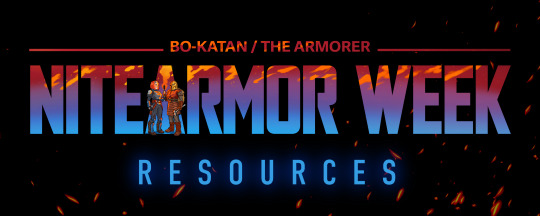
As everyone gets to work preparing for NiteArmor Week, the mods wanted to encourage people to bring their own lived experiences into their creations. You are welcome to write and draw mandalorians in a way that reflects your own life and culture; Bo-Katan and the Armorer do not have to physically resemble their live action counterparts.
What does this mean? Do you want to share your Mexican heritage and weave it into the story of your NiteArmor fic? Hell yeah! Do you see the Armorer has having dreadlocks? Include them! Do you have an insulin pump and think Bo-Katan has one under her flightsuit too? We want to heart about it!
For those who may need a little help or are looking for new resources, we have gathered a small list of guides. Some of the below sources came from @lavenderursa's collection of inclusive writing tips. The mods recommend reading through the original post they worked hard to put together! The hope of this new post is to build out their post to include a few more elements specific to Star Wars.
Writing Resources Collectives and authors who have published tips and guides on writing stories that center diverse experiences:
Writing With Color
The History of Black Hair [Words to Describe Hair]
A Guide to Natural Black Hair
How To Write About Trans People
A Primer on Writing Trans Characters
The Do’s and Don’ts of Writing Transgender Characters
Important Tips on Making/Writing Asian OCs
Dear Non-Asian Writer
How to Avoid Asian Stereotypes, Appropriation, and White Washing
Tips for Inclusivity with Reader Inserts
A Guide to Writing Disabled Characters
A general cane guide for writers and artists (from a cane user, writer, and artist!)
Creating authentic deaf and hard of hearing characters
Art Tips Helpful information on how to draw different body types, skin tones, and hair:
Basic Skin Tone Coloring [part 2]
Kupa's Guide to Skintones
A Guide to Drawing South Asian Skin Tones [part 2]
Protocols When Drawing Native American Hair
A guide to designing wheelchair using characters! [part 2]
Whitewashing in Art and How Colors Work
How to Draw Disabled People
Drawing East Asian Faces
Plus Size Body Types
POC Blush tones
Afro, 4C hair
Image References Websites that offer images that can be licensed for use and/or inspiration. The below three are highly recommended resources, but some do have a cost:
createHERstock - Your destination for authentic stock images featuring melanated women
Nappy co - Beautiful photos of Black and Brown people, for free
Eye for Ebony - Beautiful lifestyle stock photos featuring people of color
Affect The Verb - This is a disability-led effort to provide free & inclusive stock images from our own perspective, with photos and illustrations celebrating disabled Black, Indigenous, people of color (BIPOC).
Pixerf - Asia's fastest-growing Asian stock photo market place
Disability: In - Disability Inclusive Stock Photography
Disability is Beautiful - The best free stock images provided by the disability community.
Cosplayers Artists and content creators that have posted amazing Star Wars cosplay! Their hard work and attention to detail in costuming is a wonderful source of inspiration and reference. If you are inspired by any of their photos, please make sure to credit them and send your love. Here are just three examples of cosplayers within the fandom:
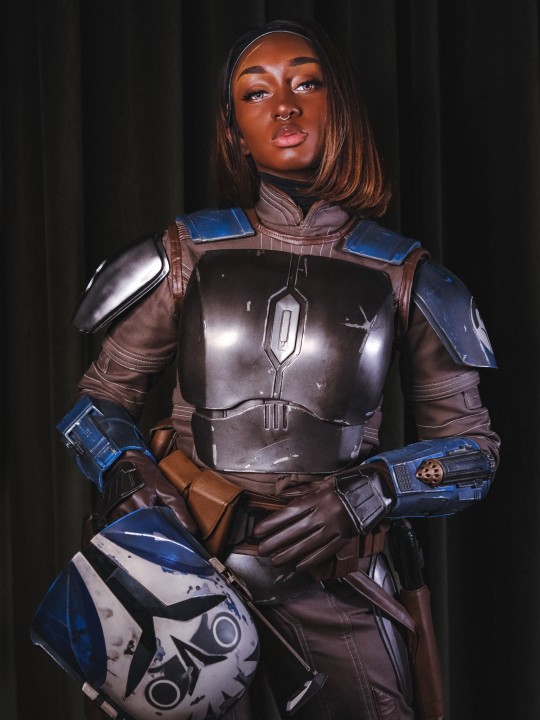


Jahara Jayde | twitter | ko-fi
arseniccupcakes | twitter | patreon
cutiepiesensei | twitter | instagram
Further Reading Additional articles, studies, and analyses that discuss racism and ableism within the Star Wars fandom specifically:
Racism In Star Wars: A List of Resources
Star Wars Franchise: Stitch's Media Mix Analyst
Star Wars: A Tale of Racism
Disability In Star Wars
Blind Warriors, Supercrips, and Techno-Marvels: Challenging Depictions of Disability in Star Wars
What's the Problem, Papi?: Internet Daddy-ism and Coddling, Fetishization, and what "Latino-looking" actually means.
Sinophobia in SW Animation
Thank you for making it to the end of this post! Please do not consider this a definitive list or a replacement for anti-racist work in the real world. Keep reading, stay curious, and seek out new perspectives from voices you may not have been listening for.
Do you have any additional recommendations, sources, or guides to share? Feel free to drop them in the comments of this post ❤️
#nitearmorweek#references#resources#bo-katan kryze#satine kryze#bo katan kryze#the armorer#mandalorian#nitearmor#armorkatan#admin post
29 notes
·
View notes
Note
We’ve already had an oh so serious discussion about the ethnicities of Kirby characters, what about Sonic characters? Like Sonic being coded as afro-arab?
(Stemming from his ancsestors being egyptian, canonically being able to read arabic, his inspiration from Michael Jackson, etc)
THIS TIMES A BILLION YEAH YEAH
Literally love all those little details about him and his friends as well. It’s so cool to see all the human designs of Sonic characters stemming from all different cultural backgrounds. Personally one of my all time favorite thangs ever.
Love to either head canon Shadow or Rouge as Latino. Mexican Shadow go brrrrr hsjshshhs omg he’s just like me fr fr
Same with how knuckles is Jamaican inspired, with his colors being the same as the Rastafarian flag which is beyond cool. But also with the echidna tribe having Mescoamerican origins as well, LIKE YEAHHH LETS GO????? My ancestors would be so happy with Knuckles come on shjshshsh.
Same thing with Blaze, her design being very Southern Asian inspired as well— noticeably her bindi aka the mark on her forehead as well as her whole kingdom having a very distinctive architecture.
Silver is Italian 🇮🇹 100%

#ask#wish I could draw humans well enough to give it a whirl oughhh..#Afro-arab Sonic my beloved#HSHSJSJJSB THERE WAS A POST THAT I REMEMBER THAT WENT INTO THIS AS WELL#LOVE IT SM#fav#sonic the hedgehog
18 notes
·
View notes
Text
“Borderlands/La Frontera” - Gloria Anzaldúa

Hello friends,
For my first recommendation this Latine Heritage Month, I want to highlight a famous text that dissects the contradictory identities Latines face inside the “US” from a queer Chicana perspective: “Borderlands/La Frontera: The New Mestiza” by Gloria Anzaldúa.
Gloria E. Anzaldúa was an internationally-acclaimed independent scholar, cultural theorist, creative writer, and social-justice activist who has made lasting contributions to numerous fields. This book in particular played a major role in shaping contemporary Chicano/a and lesbian/queer identities.
“Borderlands/La Frontera” is a semi-autobiographical work that explores the Chicano and Latine experience through themes of race, gender, identity, and colonialism. The narrative reflects on Anzaldúa's upbringing in South Texas, her cultural heritage, and the struggles of her community, particularly in relation to land and identity. Her writing aims to connect oppressed Latine peoples with their indigenous cultural backgrounds as shown through her “poet-shaman aesthetics,” her poetry, and English-Spanish code switching.
I really appreciated how Anzaldúa examined the pain and trauma imposed on Indigenous and Chicano communities by colonial powers in relation to their struggles for cultural survival as a form of spiritual healing. I also loved how she critiqued traditional gender roles within Chicano contexts and embraced her lesbian identity as a way of standing in solidarity with queer Latines to affirm current and ancestral queer identities in the face of patriarchy.
Another important and controversial concept Anzaldúa unpacks is mestizaje, referring to the blending and intermingling of different cultural, racial, and ethnic identities, particularly in the context of the Chicano and Latino experience. This can potentially be empowering as it allows folks to re-imagine their histories beyond strict notions of identity and belonging, but can also romanticize the idea of cultural blending at the expense of acknowledging that Afro-Mexican, Afro-Latine, and Mexic-Amerindian experiences are unique.
I highly recommend Latines read this text as a part of our contradictory history.
#book blog#book review#bookblr#hispanic heritage month#latine heritage month#gloria anzaldua#chicana#queerness#feminism
7 notes
·
View notes
Note
Hey hi more
🌍,🔮
Heeeyhiii heheheh let's get into it coz I got hcs with this!
🌎 in clothing/doing something that represents their culture.
So. I hc that Bobby is French n Mexican-American. His mother being French and father Mexican-American(grandfather was full Mexican, jst to add bit more to his background :3)
So like. I'm tired n might get yelled at for this but idc so we pullin out the stereotypes. Let's be honest, tho. Bobby would put on that fake lil mustache n silly hat(he likes dressin up silly(*looking at the scene w the afro wig* silly)). You can also see the stripped shirt. A dumb reference to mimes since they're "known" as French stuff or whatever. Again. We pulled out the stereotypes 👍
I hate how he looks. Get the stache off him! GET IT OOOFFF!!! GET THAT SHIRT OFF HIM HE DONT LOOK GOOD IN STRIPPESS
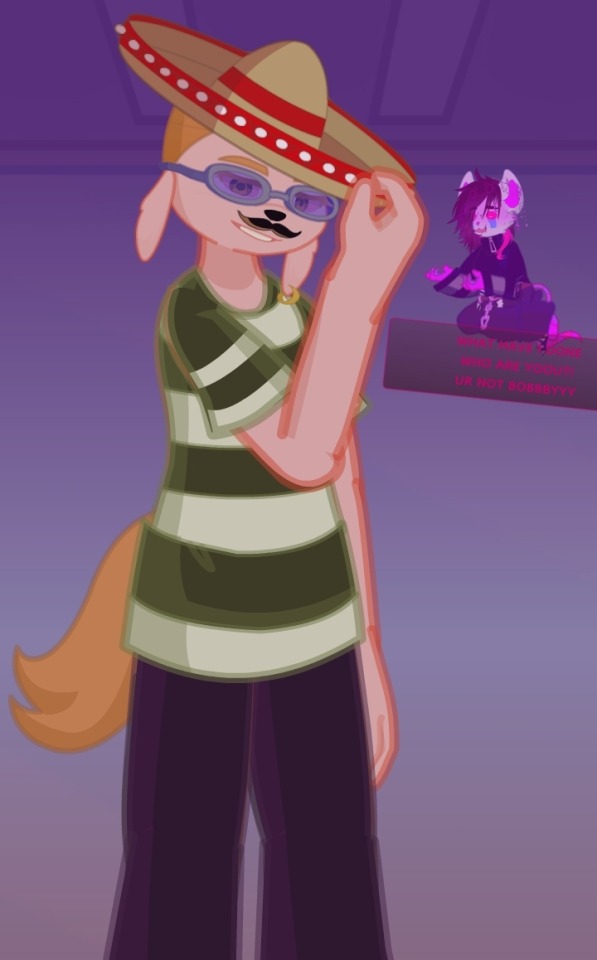
I would have searched up, like, traditional outfits for both n woulda prob tried mixing them somehow, but again I'm tired. Should had this posted at least 2ish hours ago but kept getting distracted w shi
Anyway! The second one
🔮 using magic.
I hc that Max definitely had a small obsession with up close magic throughout middle school, probably begged to go to magic camp or smthin but ended up just learning from books that Goofy got him coz he most likely didnt have the funds for camp at the time(he felt horrible abt it coz Max got super sad before getting the books to learn from). I feel like he'd still randomly do tricks when he's bored, too. Maybe he'd do some during a party to impress some of the drunks or smthin. Idk
His favorite trick to do is a card trick called "3 card monte" mostly coz it's an easy way to earn a tiny bit of pocket cash. If you don't know it, you basically bet a sum of cash n have to find which of the three cards its under. If you want a full explanation, Google.
No, like, seriously, hes probably earned at least over 200 from gullible adults n classmates in his hometown throughout middle/high school from this trick.
Would do this w that one, but since I'm only doing just 1 ss with each rn, I made him do a silly lil hat trick.

Also, small change w the gloves. He now has the spikes/studs(whatever it's called) instead. Coz ✨emo boi✨
#ask answered#character prompt#prompt#gacha life 2#gl2#maximillian goof#max goof#bobby zimmeruski#robert zimmeruski#i feel like ppl forget thats his actual name. coz it aint even a tag. it should be a tag#RESPECT THIS MANZ NAME >:[#AND MAKE IT A TAG DAMNIT#like we got max's legal name. why not bobbys#sorry. i jst love him
7 notes
·
View notes
Text
AFRO-MEXICANS, A FORGOTTEN LOT!
Afro-Mexicans make up about 2 per cent of Mexico’s 129-million population. However, after the Mexican Revolution in 1910, the state emphasised a Mestizo (mixed Indigenous and European) identity, marginalising Afro-Mexicans.
But who are the Afro-Mexicans? Spaniards captured their ancestors in Africa and sold them into slavery in ‘New Spain,’ now modern Mexico, after the Spanish conquest of the Aztec Empire in the 16th century. Those Africans who escaped plantations settled on Mexico’s highlands and Pacific Ocean coastline to become what we know today as Afro-Mexicans, now one of Mexico’s 69 distinct cultural identities.
Almost 500 years later, during the 2019 census, Mexico amended its constitution to recognise Afro-Mexicans as an ethnic group. This historic step acknowledged Africans’ existence in the country and paved the way for healthcare funding, among other benefits.
We hope this marginalised community of Africans obtains economic and political equality in the country they call home.
9 notes
·
View notes